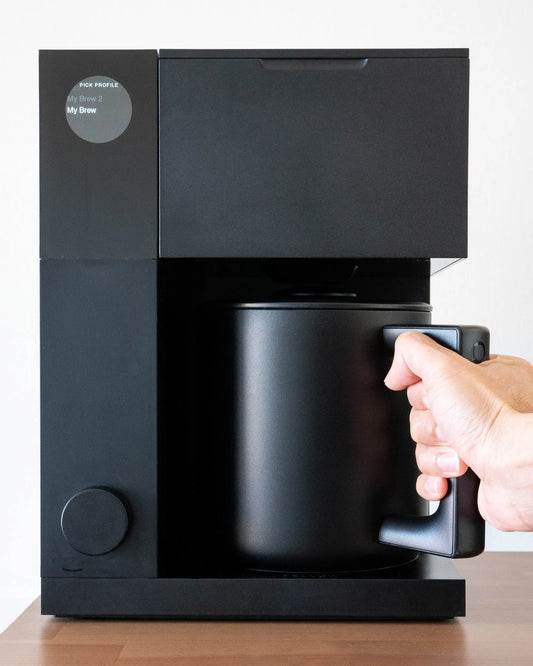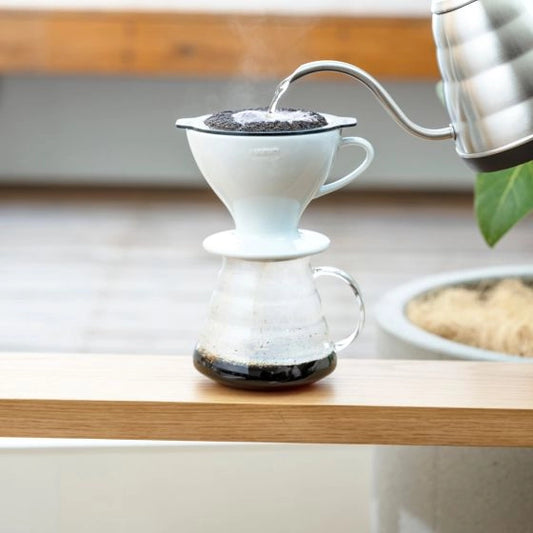
Ethiopia Halo Beriti Brew Guide
Share
There is something special about Ethiopian coffees, most coffee professionals share a similar first love of coffee, describing their first Ethiopian coffee as the most memorable. There is a very distinct taste profile from Ethiopia that has resonated with so many people and put them on a path of coffee exploration and in many cases a life long career in the coffee industry.
Ethiopian Coffee Processing:
Ethiopian coffees are generally naturally processed, with an estimated 70% of coffee production being natural / sun dried processed. This is largely due to the inexpensive cost of sun-drying coffee in comparison to the washing process which requires more machinery and labour, as well as this water is a precious resource in Ethiopia which makes it less accessible and less viable to use for coffee processing.
We are very fortunate to have come across a washed coffee from the town of Tatatu which is in the Gedeb district (not far from Yirgacheffe town) in the region of Gedeo zone, It has one of the highest altitudes of the region and is known for producing some excellent tasting coffees in Ethiopia.
Ethiopia Halo Beriti Washed
We are proud to roast and sell this Ethiopian Halo Beriti coffee which we sourced from Utopia Coffee after tasting a range of different samples, this coffee stood out to us as being the most interesting. The first most noticeable taste was a strong Earl Grey tea followed by a honey sweetness and mild spices as your coffee cools.
How to Brew This Washed Ethiopian coffee:
We have played around with a couple recipes and found the best way to highlight this coffees gentle flavour profile was to use a cooler water temp, an even amount of pours and paying attention to your water mineral content, heres our washed Ethiopian coffee brew guide;
You will need:
- 20g Basic Barista Washed Ethiopia Halo Beriti
- 300g Water at 90ºc
- Hario V60 Dripper
- Cafec Abaca Paper Filters
- Fellow Mighty Small Glass Server
- Apax Lab Water Minerals Set (We used Jamm #3)
- Set of coffee brewing scales

Recipe:
-
Preparation: First prepare your set up, add 1x Abaca filter paper to your Hario V60 and pre-wet your filter with hot water. Add 4x drops of the 'Jamm' Apax Lab water mineral profile to your kettle with 1L of distilled water.
While your water is rising to temperature grind 20g of your coffee around 25 Clicks on a Comandante C40 grinder. (If you don't have a Comadnante C40, check out our grind size chart to find the microns). - Final set up: Now that you have all your ingredients prepared, add your ground coffee to your dripper and place the Hario V60 dripper on top of your coffee server & coffee brewing scales. Using a stick / small spoon, gently rake over the surface of the coffee grounds to create an even bed of coffee.
- The Brew: You are now ready to start brewing, pour 5x pour of 60g of water. Wait for 40 seconds after each pour and swirl your dripper when your bed is starting to look a little rough. Aim to pour your water in a slow and consistent pace, we don't want to agitate the grounds too much but you still want to make sure you cover all the dark patches on the surface evenly.
- Decant: Your brew should have finished around the 3 minute mark, remove the V60 when the drips have come to a complete stop and decant your pour over coffee into your specialty coffee cup of choice.
The Results:
When we brewed this we our pour over resulted in a 3 minute brew time, yielded 265g and had a TDS of 1.57%.
This coffee was full bodied with heaps of earl grey tea notes present, and as the coffee cooled this coffee expressed more spices and light citrus notes.
There are thousands of ways to brew coffee, this brew method is how we have been enjoying this coffee and while we think it is a good balance of being simple enough to repeat and detailed enough to cover most variables this is not going to be to everyones liking.
We encourage you to brew, experiment and find your own recipes that suit your pallet!
And when you do, please be sure to share your recipes with us by leaving a comment down at the bottom of this page.






